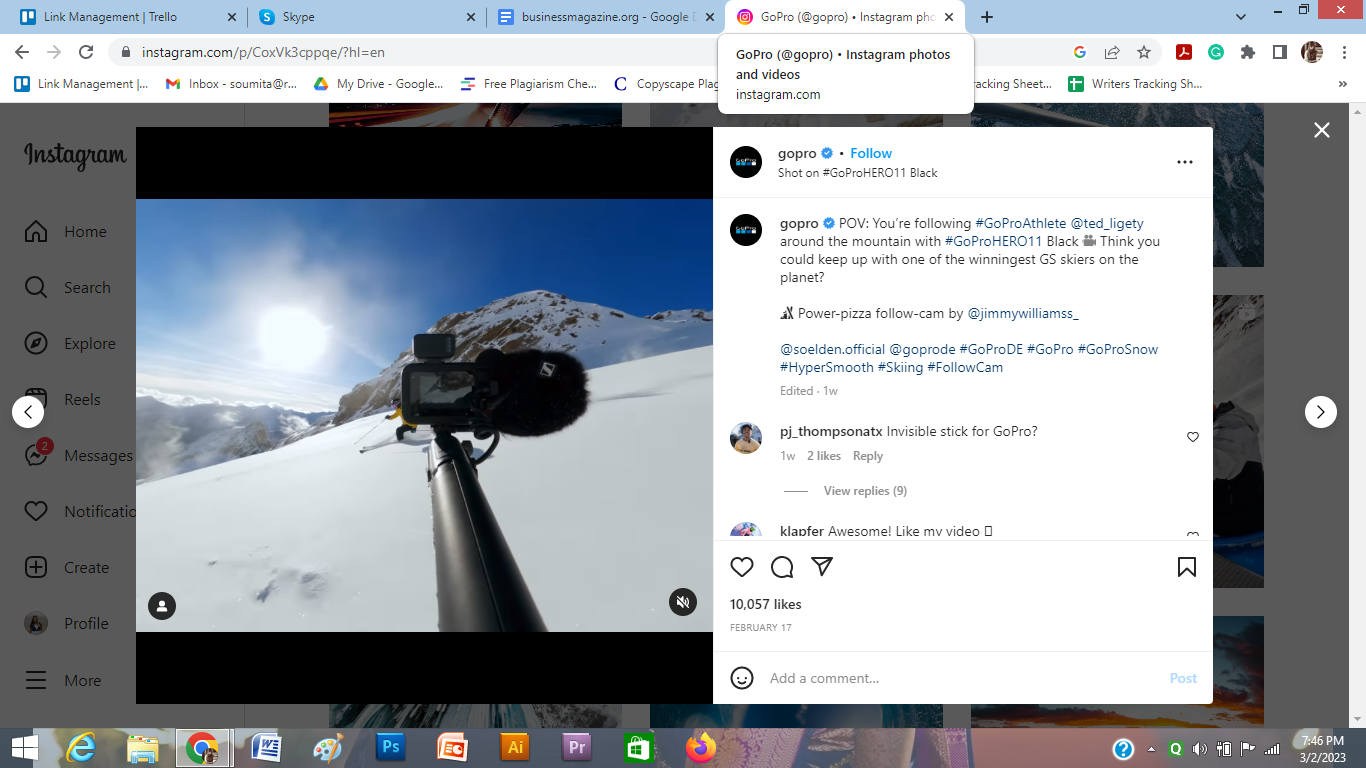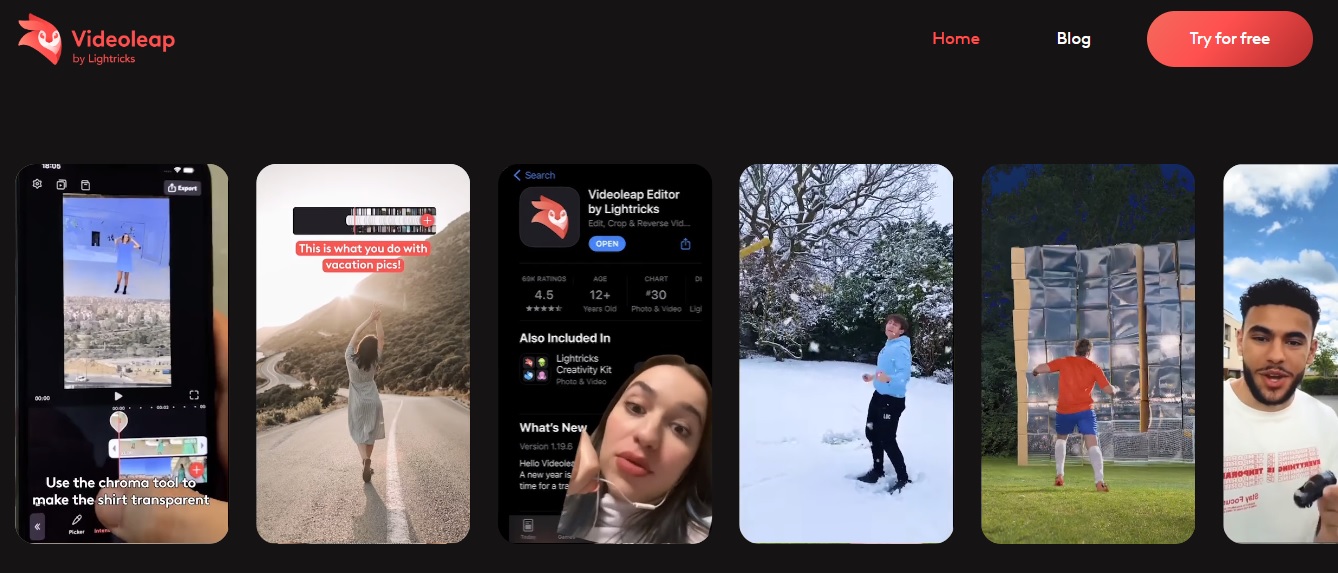
Video is one of the most powerful content formats that small business marketers can use today. Whether you want to boost brand awareness or build audience engagement, video marketing is the way to go.
According to Statista, in 2021, US adults spent 149 minutes per day watching video content. Moreover, digital video consumption is projected to overshoot traditional TV viewing by 2026.
Besides grabbing your audience’s attention, digital video can also help you generate leads and drive conversions when judiciously used.
And what better channel to distribute video content than social media platforms? According to a recent Wyzowl report, 71% of marketers created videos for social media in 2022.
If you’re wondering whether to use video marketing, here are a few eye-opening statistics from the same Wyzowl report for you:
- 91% of businesses use videos for marketing in 2023.
- 96% of marketers consider videos an important part of their strategies.
- 70% of non-video marketers plan to invest in online video marketing in 2023.
How to Build a Robust Video Marketing Strategy for Social Media
Given the popularity of video content among consumers and businesses alike, it’s only natural that you want to ensure video is well accounted for in your digital marketing budget so you can make the most of video in your marketing mix.
But with so many brands already flooding the internet with videos, how do you ensure your content cuts through the noise?
The good news is that you don’t need sky-high production budgets to make your videos stand out. Here are a few tactics to help you develop a high-performing social media video marketing strategy.
Leverage Interactive and Shoppable Videos
Digital videos aren’t just a tool to grow brand awareness and reach. You can use them to drive conversions, too.
All you have to do is create interactive, shoppable videos. Many social media platforms, including Instagram and TikTok, let you tag products in your videos, making it easy for viewers to purchase without ever leaving the app.

Alternatively, you can use platforms like Amazon Live to host interactive live streams featuring your products. You can even invite influencers to review your products or give a detailed rundown of how to use them. Links to these products are available below the player window, making it easy for viewers to purchase them right away.
Shoppable videos streamline the customer journey by letting viewers buy products while you still have their attention. That, in turn, improves conversion rates and maximizes the return on investment (ROI) of your video marketing campaigns. With brands like IKEA, Puma, and Fenty Beauty investing in this video format, it’s high time you jump on the bandwagon.
Tell Your Brand’s Story
Consumers don’t log into their Facebook, Instagram, or TikTok accounts to be flooded with promotional messaging from brands. Instead, they use social media as an escape from their everyday lives and want to be entertained and inspired.
If your videos brag about how great your products are, they won’t strike a chord with the target audience. Instead, it’s wiser to use videos to highlight your brand’s goals and mission.
Take your audience to the core of the action with behind-the-scenes videos of your office. You can upload short clips of brainstorming sessions, team meetings, or product development as Stories on Instagram and Facebook.
Alternatively, you can shoot a documentary or create an animation video to showcase how you’re building your business. Whether you’re using an eco-friendly production process or hiring employees from underrepresented communities, use videos to communicate that.
You can even collaborate with popular influencers to highlight the causes and values your business stands for. For instance, GoPro uses their Instagram page to frequently upload videos of people enjoying various adventures, such as snowboarding, skiing, and kitesurfing.

Such videos compel GoPro’s target audience to subconsciously associate the brand with the adrenaline rush of extreme sports. A video listing the features and functionalities of their cameras wouldn’t have the same impact.
Invest in Post-Production
When creating live-action or animated videos, you must devote adequate time and resources to post-production. While you don’t need award-winning film editors, you need skilled video editors who can jazz up raw footage with special effects, transitions, and more.
An easy-to-use video editing tool like Videoleap comes in handy here. With Videoleap, you can edit videos based on templates created by others – just choose one according to the categories that make the most sense, feed in your own footage, and you’ve got an awesome clip with perfectly synced music, transitions, titles and effects.

From simple photomontages to trending Instagram Reels, you can create a variety of video content using Videoleap. The best part is that you can easily optimize your finished videos on your social media profiles. No need to spend time reformatting videos in different aspect ratios for each social media platform. The tool is available on both Android and iOS devices and comes with a free trial.
Besides assembling raw footage into a logical narrative, post-production involves other aspects, such as adding subtitles and closed captions. If you’re planning to publish videos on your YouTube channel, you’ll also want to add suitable calls-to-action (CTAs) and end screens.
Focus on Smaller Details
Awesome-looking visuals and special effects aren’t the only things that’ll make your videos attractive. You must find ways to grab the maximum eyeballs from the get-go.
Start by designing a stellar thumbnail for every video that clearly communicates what it’s all about. You can use an online thumbnail maker like the one offered by Visme, which comes with a plethora of customizable pre-built templates. Choose the template you like and customize it with different icons, typographies, and images.
Next, make sure you add a proper title and description for a video while uploading it. Using relevant keywords will ensure your videos attract more attention. Platforms like Facebook and YouTube even let you add tags to convey what your video is all about, making them more searchable.
While you’re at it, add proper hashtags to the captions accompanying your videos.
Track and Analyze Video Metrics
One great thing about social media is that you get a detailed insight into content performance and audience engagement. Every platform offers a detailed analytics section where you can track metrics, such as video views and impressions.
You can also check the number of likes, comments, and shares on each video to get an idea of engagement rates.
However, monitoring analytics on individual social media platforms can be cumbersome and time-consuming. You can use a social media dashboard solution like Klipfolio for an extensive overview of how your videos are performing on different platforms. It’ll help you track the total reach, impressions, likes, comments, and clicks each video garners.
Analyzing these metrics is crucial to understanding whether your content is delivering the desired results. Also, it’ll help you identify subjects, themes, and formats that resonate well with your audience, letting you make informed decisions for upcoming campaigns.
It’s Time to Up Your Video Marketing Game
Creating promotional videos about your business or products won’t attract sustained attention on social media. Instead, you must focus on delivering emotionally compelling content that highlights your brand’s story.
Create shoppable videos to boost customer engagement and conversion rates. Use proper editing tools to make your videos attractive, and track their performance on each platform to optimize your content strategy.











